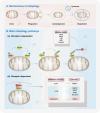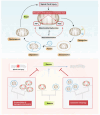Mitophagy: A key regulator in the pathophysiology and treatment of spinal cord injury
- PMID: 40587237
- PMCID: PMC12407537
- DOI: 10.4103/NRR.NRR-D-24-01029
Mitophagy: A key regulator in the pathophysiology and treatment of spinal cord injury
Abstract
Mitophagy is closely associated with the pathogenesis of secondary spinal cord injury. Abnormal mitophagy may contribute significantly to secondary spinal cord injury, leading to the impaired production of adenosine triphosphate, ion imbalance, the excessive production of reactive oxygen species, neuroinflammation, and neuronal cell death. Therefore, maintaining an appropriate balance of mitophagy is crucial when treating spinal cord injury, as both excessive and insufficient mitophagy can impede recovery. In this review, we summarize the pathological changes associated with spinal cord injury, the mechanisms of mitophagy, and the direct and indirect relationships between mitophagy and spinal cord injury. We also consider therapeutic approaches that target mitophagy for the treatment of spinal cord injury, including ongoing clinical trials and other innovative therapies, such as use of stem cells, nanomaterials, and small molecule polymers. Finally, we highlight the current challenges facing this field and suggest potential directions for future research. The aim of our review is to provide a theoretical reference for future studies targeting mitophagy in the treatment of spinal cord injury.
Keywords: ATP production disorders; cell death; mitochondria; mitophagy; neuroinflammation; neuroprotection; oxidative stress; secondary injury; spinal cord injury; treatment.
Copyright © 2025 Neural Regeneration Research.
Conflict of interest statement
Figures





References
-
- Ahuja CS, Wilson JR, Nori S, Kotter MRN, Druschel C, Curt A, Fehlings MG. Traumatic spinal cord injury. Nat Rev Dis Primers. 2017;3:17018. - PubMed
-
- Ahuja CS, Nori S, Tetreault L, Wilson J, Kwon B, Harrop J, Choi D, Fehlings MG. Traumatic spinal cord injury-repair and regeneration. Neurosurgery. 2017;80:S9–S22. - PubMed
-
- Aimaiti M, Wumaier A, Aisa Y, Zhang Y, Xirepu X, Aibaidula Y, Lei X, Chen Q, Feng X, Mi N. Acteoside exerts neuroprotection effects in the model of Parkinson’s disease via inducing autophagy: network pharmacology and experimental study. Eur J Pharmacol. 2021;903:174136. - PubMed
LinkOut - more resources
Full Text Sources

